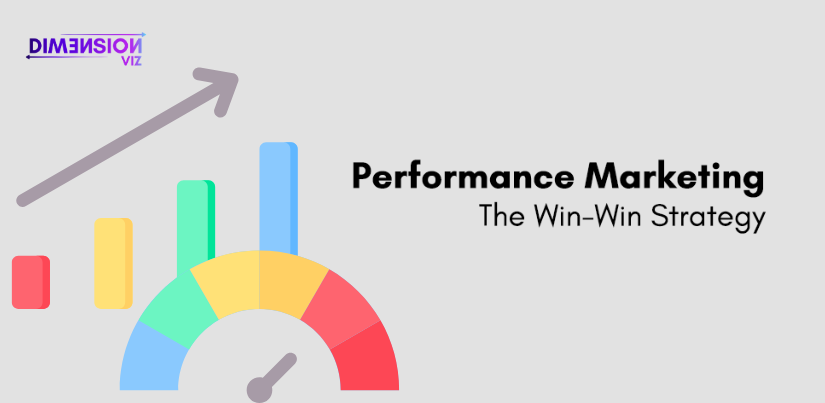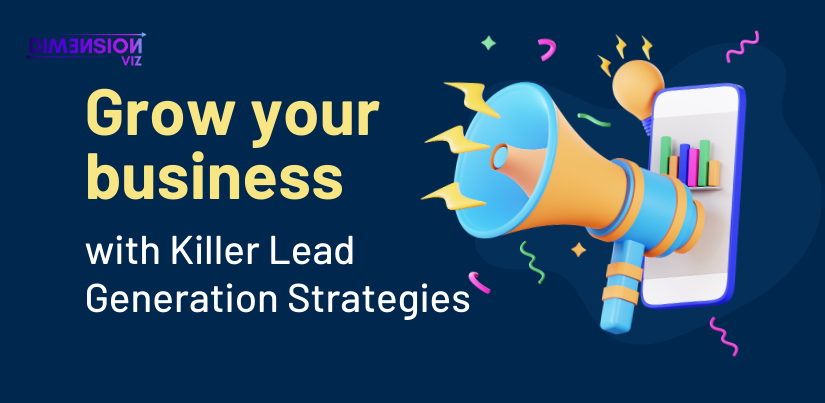Performance Marketing: The Win-Win Strategy
Global digital advertising spending (including desktop, laptop, and mobile devices) is expected to reach $455.3 billion in 2021. According to Statista, this figure will steadily rise over the next few years, reaching a whopping $646 billion by 2024.
Considering this forecast, it’s not surprising that new types of online marketing are constantly emerging, such as social media marketing, affiliate marketing, email marketing, and most notably performance marketing.
Performance marketing, a combination of paid advertising and brand marketing, refers to advertising programs in which affiliates and marketing companies are only compensated upon the completion of the desired action, such as a completed lead, sale, booking, or download.
This win-win marketing opportunity allows a retailer (or “merchant”) and affiliate (or “publisher”) to target campaigns in a strategic, high ROI manner, all based on performance. A merchant can feel confident that their money is being well spent if they pay the affiliate when a specific action is completed because they are already converting their target audience before they pay for the transaction.
Additionally, merchants can benefit from free brand exposure and targeted clicks along the way.
If this interests you, keep reading for a detailed explanation of performance marketing and how to get started.
What is Performance Marketing?
Performance marketing refers to online marketing campaigns where advertisers pay for clicks or conversions.
Performance marketing is used to drive actions, track and measure them, and attribute ROI to each asset, campaign, or activity.
While big companies can spend millions on branding, most businesses must focus on the bottom line. Performance marketing empowers advertisers. You decide the action, then pay when it’s completed – a sale, lead, or click.
What Makes Performance Marketing Different?
In traditional advertising, the advertiser pays upfront for ad space regardless of performance. That could mean hundreds to thousands of dollars wasted. Performance marketing only charges for successful transactions.
Brand marketing vs performance marketing
In a brand-saturated market, standing out is difficult; brand awareness is crucial. Social media, native advertising, content marketing, and more can increase brand awareness. Some of these may be performance marketing because they’re measurable and advertisers pay for specific actions.
Affiliate Marketing Vs Performance Marketing
Affiliate marketing is a subset of performance marketing because it uses metrics and goals. Affiliate marketing pays a commission for promoting another company’s product online. Affiliate marketers promote merchants’ websites to increase traffic, clicks, and sales. Affiliates are paid for clicks, conversions, and leads.
Performance Marketing Measurement Methods
Every activity and action is measured, reported, and analyzed against pre-defined KPIs. This is how to optimize a campaign’s performance.
Tracking ROI regularly is key to successful digital marketing. Whatever performance optimization tool you choose, give your campaigns time to gather data. More data means deeper insights and better optimization.
Performance marketing metrics and KPIs include:
1. CPM
CPM is the cost an advertiser pays for 1000 digital ad impressions. It’s the cost of 1000 ad impressions. CPM doesn’t measure what viewers do; it just figures out how much an ad costs. Some performance marketers are paying more attention to action-based metrics than CPM.
2. CPC
Cost Per Click is the price per ad click. CPC is better than CPM because the viewer clicked on the ad. A higher CPC means a higher conversion value. A luxury car brand may set a higher CPC to target a smaller audience of high-potential buyers. The click costs more, but the return is higher.
3. CPA
CPA measures campaign performance based on a specific desired action, such as downloading an ebook, signing up or subscribing, purchasing an item, etc. In performance marketing, customer action is the most important measurable result, so CPA is a popular metric.
4. LTV
This metric predicts a customer’s “Lifetime Value” throughout their relationship with a brand or company. LTV estimates acquired customers’ expected spend based on ongoing activity, using predictive analytics. LTV is becoming popular because it helps marketers plan their strategies to boost ROI.
Types Of Performance Marketing
New technology and consumer behaviors have changed performance marketing. “Hitting the right people on the right device at the right time” is what digital marketing is all about. There are more ways than ever for performance marketers to make campaigns that work well for different audiences and goals.
Search engine marketing is a worthwhile part of performance marketing. Paid ads on SERPs are SEM (SERPs). It’s effective because it shows the user ads related to the product or service they’re searching for when their intent is high and there’s a good chance of capturing their attention and interest.
Native advertising is another performance marketing type. Because native ads don’t look like ads, they don’t disrupt the user’s browsing experience. They fit “natively” on the page. Native advertising is measurable with Outbrain Amplify. Choosing a high-quality network can help you reach high-quality traffic and audiences.
How to Create a Performance Marketing Strategy?
There’s no one way to do performance marketing because there are so many channels and campaigns. These are the main steps for any performance marketing strategy and audience. Use them to improve your performance campaign.
Step 1: Set A Campaign Goal.
Before measuring a campaign’s success, set goals. Setting goals before launch is the foundation of performance marketing.
Before creating ads or campaigns, many ad platforms require setting goals. Your campaign goals determine where, to whom, and other success factors.
Digital marketing objectives include:
- Visibility
- Traffic
- Retargeting
- Engagement
- Lead Generation
- Sales
Once you know your campaign goals, ad platforms can help you reach them.
Step 2: Choose A Digital Channel (s)
Diversify your performance marketing channels instead of focusing on one. This increases campaign visibility and success chances. Look for channels that specialize in your conversion type and where you can find your target audience.
By diversifying on social media networks or switching from display ads to native ads, you can expand your performance campaigns’ reach.
Step 3: Start The Campaign
Creating campaigns requires identifying the target audience, understanding their pain points and desires, and crafting ads and messaging to address their needs and grab their attention. The more you understand your target audience and how to appeal to them, the better your ad copy, design, and schedule will be. Ad sizes, character limits, and acceptable images vary by platform or channel.
Step 4: Optimize Your Campaign
After the launch, the work begins. Once launched, performance campaigns generate data. Marketers must optimize campaigns across all channels. Track analytics and metrics to determine which traffic sources perform best, then allocate ad funds. Use performance marketing campaigns to increase sales and identify your best channels, audiences, and campaign goals.
Step 5: Handle Potential Pitfalls
Performance marketing, like any marketing campaign, has challenges and pitfalls.
Examples:
- Reputation
- Compliance concerns
- Regulating privacy
- Frauds and bots
- Transparency and publisher fraud.
Focusing your resources on high-quality advertising networks and platforms where brand safety and data privacy are handled responsibly can reduce potential problems.
Benefits of Performance Marketing
Native advertising is performance marketing – advertisers create ad campaigns for a specific conversion goal and only pay for clicks or other conversion actions. Compare this to a TV ad, which runs for a certain period and frequency but doesn’t guarantee how many consumers will see it or react to it.
This explains performance marketing’s benefits. Performance marketing emphasizes tracking and attribution, giving marketers more budget and ROI control.
Performance marketing is the new marketing for 3 reasons:
- Performance marketing campaigns are designed to be measured and tracked. Keeping a finger on performance campaigns and adjusting them for better results is easy with data analytics tools designed for performance marketers.
- Marketers know what’s happening with their performance campaigns at every stage, so they can optimize and reduce risk as needed. Less risk means faster launch times. No more approval-seeking.
- Performance marketing focuses on ROI to improve performance. This ensures that performance campaigns continually improve, which boosts the brand’s leads and sales.
Real-World Example of Performance Marketing
VAVAVOOM – YouTube video campaign
TrueView for Action is a Google Ads video campaign type that aims to increase conversions and leads through action-driving features. VAVAVOOM, a global fashion retailer, saw some very impressive results from a YouTube video campaign that used TrueView for Action.
To achieve this goal, the company set a ROAS of 10:1, combining the TrueView campaign with custom intent audiences and in-market targeting. They far exceeded expectations, achieving 304,517 interactions during the 11-week campaign and a 1409 percent ROI.
Final Word
Performance marketing campaigns enable you to track everything from brand awareness to conversion rates on a single ad. Advertisers are looking beyond branding to build marketing strategies with proven ROI as advertising becomes more transparent.
Performance marketing arose from this need and has only grown in sophistication and sophistication over time. So get started with performance marketing today and start reaping the benefits of ROI tracking, measurement, and optimization.







